"The construction schedule must make efficient use of resources, while finishing the project in the shortest time" It’s important a construction project schedule is prepared which should:
#constructionmanagement #constructionschedule #constructionprojectmanagement
Paul Netscher has written several easy to read books for owners, contractors, construction managers, construction supervisors and foremen. They cover all aspects of construction management and are filled with tips and insights.
Visit to read more. The books are available in paper and ebook from most online stores including Amazon. © 2022 This article is not to be reproduced for commercial purposes without written permission from the author.
1 Comment
"It’s important to plan the project thoroughly before starting work" It’s important to plan the construction project thoroughly before starting work, so the more time available to do this the better. The planning includes: 1. thinking through the construction methodology and ensuring the methods selected will be the most efficient and economical (How To Select The Appropriate Construction Method To Increase Safety And Efficiency) 2. preparing the project construction schedule (the construction project schedule or programme (program)) 3. taking out adequate insurance 4. deciding what construction work will be self-performed and what will be subcontracted (choosing a subcontractor) 5. ensuring the required construction resources are available and procured (What you should consider when staffing your construction project. ) 6. ordering long-lead items required for the construction project 7. ordering construction materials which will be required to start the project (Ordering the correct quantity of construction materials) 8. sourcing construction equipment (Become Great at Hiring Equipment for Your Construction Project) 9. arranging the necessary permits 10. preparing and submitting the required paperwork to the client which may include: a. quality plans b. safety plans c. environmental plans d. traffic management plans e. method statements f. job hazard assessments "Time spent on planning is time well spent." Proper and thorough planning will pay dividends and will save costs and make the management of the project easier. Time spent on planning is time well spent. #constructionmanagement #constructionprojectmanagement #planningprojects
Paul Netscher has written several easy to read books for owners, contractors, construction managers, construction supervisors and foremen. They cover all aspects of construction management and are filled with tips and insights.
Visit to read more. The books are available in paper and ebook from most online stores including Amazon. © 2022 This article is not to be reproduced for commercial purposes without written permission from the author. "Poor productivity on construction projects is a common problem" Poor productivity on construction projects is a common problem which results in project delays and increased costs. Poor productivity could be a result of:
How clients impact productivity costing contractors moneySometimes poor productivity on the construction project is a result of the client. The reasons must be ascertained so measures can be implemented to rectify the situation, or so that variations for the additional costs caused by the client can be submitted. (How clients accidentally sabotage construction projects, and how you can stop it) Reasons may be because of:
Improving construction productivity is a team effortIt is important that Supervisors and Project Managers are made accountable for their worker’s productivity. Labour productivity should be monitored on each project on all sections. Feedback must be provided to Supervisors and workers, and suggestions made as to how the productivity could be improved. #constructionproductivity #constructionmanagement #constructionprojects Paul Netscher has written several easy to read books for owners, contractors, construction managers, construction supervisors and foremen. They cover all aspects of construction management and are filled with tips and insights.
Visit to read more. The books are available in paper and ebook from most online stores including Amazon. © 2022 This article is not to be reproduced for commercial purposes without written permission from the author. "Improving the productivity of construction equipment will improve profits" On some construction projects, such as earthmoving and road projects, the hire costs of plant and equipment can be significant and improving its productivity can improve the project’s profit. Some Reasons why projects lose money #constructionmanagement #constructionequipment #constructionproductivity How poor equipment productivity impacts your construction projectPoor construction equipment productivity: 1. can adversely impact the construction schedule How useful is your construction schedule/program on your project? 2. could result in additional construction equipment having to be brought onto the project 3. causes the available construction equipment to have to work longer hours 4. impacts on labour productivity by:
We will look at some reasons for poor construction equipment productivity in a later post. Construction Equipment Productivity Paul Netscher has written several easy to read books for owners, contractors, construction managers, construction supervisors and foremen. They cover all aspects of construction management and are filled with tips and insights.
Visit to read more. The books are available in paper and ebook from most online stores including Amazon. © 2022 This article is not to be reproduced for commercial purposes without written permission from the author. |
Archives
June 2024
Note: We welcome genuine comments, especially comments that add additional information to the subject matter in the article. We however reserve the right to remove inappropriate comments, which includes comments that have nothing to do with the subject, comments that include inappropriate language, and comments that are an advertisement for a product or company, or which include an advertising link. Comments must be in English. We will not enter into discussion on why a particular comment was removed.
CategoriesCopyright 2016 - The attached articles cannot be reproduced for commercial purposes without the consent of the author.
The opinions expressed in the attached articles are those of the writer. It should be noted that projects are varied and different laws and restrictions apply which depend on the location of the contractor and the project. It's important that the reader uses the supplied information taking cognisance of their particular circumstances. The writer assumes no responsibility or liability for any loss of any kind arising from the reader using the information or advice contained herein. "I have what I consider some of the best books on construction management."
Books are available from: Amazon.com Amazon.co.uk takealot.com kalahari.com Amazon.in Amazon.de Amazon.fr Amazon.it Amazon.com.au Powell's Fishpond uread bokus Amazon.ca Amazon.es Other retail stores Available in paperback or on Kindle "28 YEARS OF CONSTRUCTION PROJECT MANAGEMENT EXPERIENCE, DEVELOPING SUCCESSFUL CONSTRUCTION PROJECT MANAGERS AND BUILDING SUCCESSFUL CONSTRUCTION COMPANIES"
|
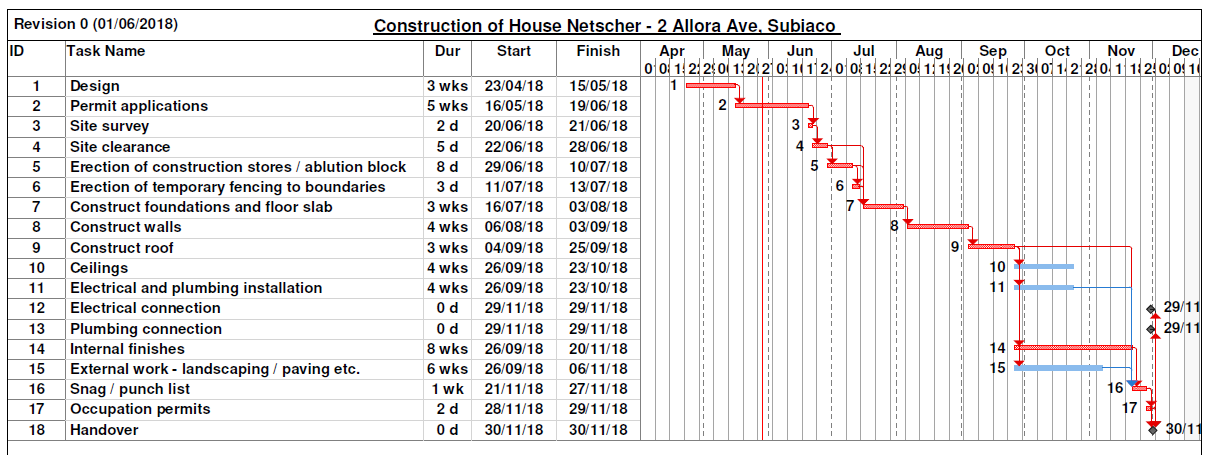

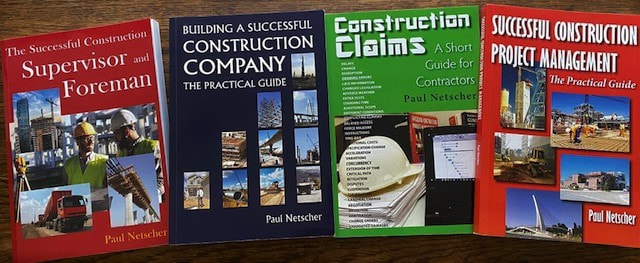
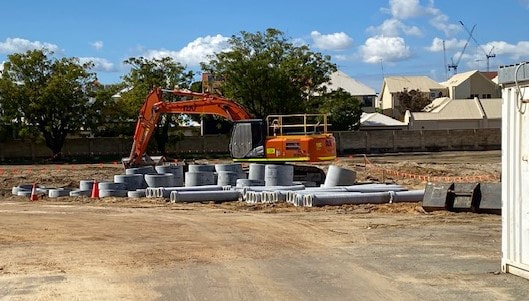

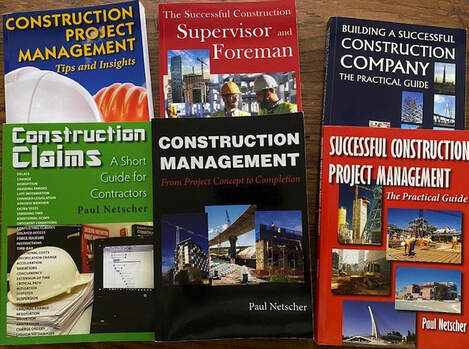
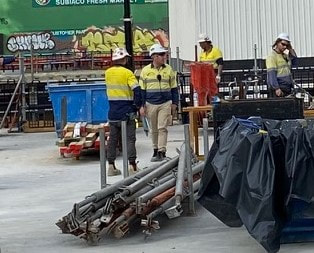
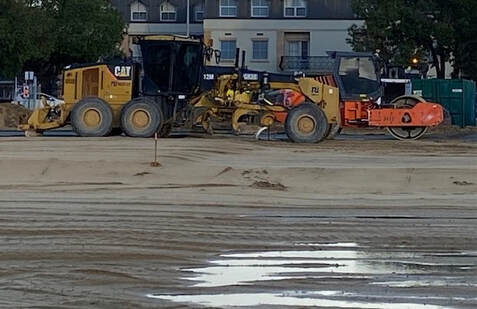


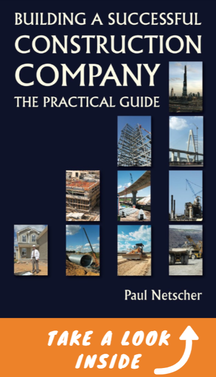

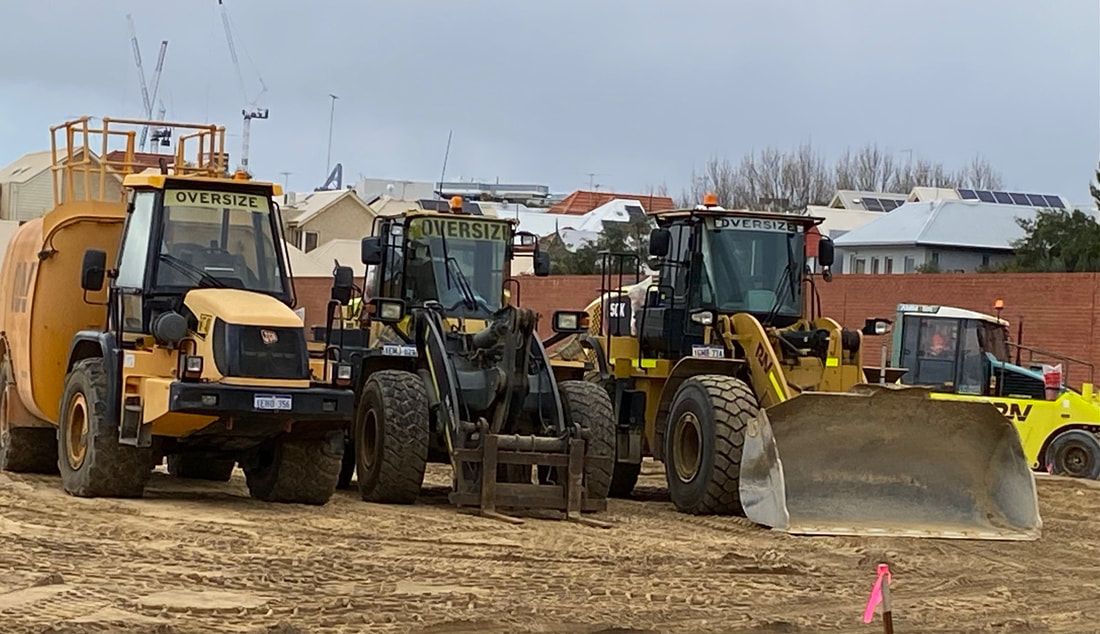
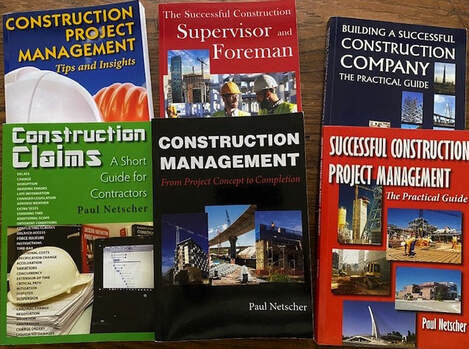


 RSS Feed
RSS Feed




